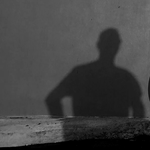(This article contains a multitudinous array of spoilers… Consider yourself warned.)
I have been told many times that I worship at the altar of Christopher Nolan, and I have an admission to make: Yeah, I basically do. Note that much of my first column was devoted to Nolan’s input and statements he has made in the past. When it comes to movies, I place his on a pedestal that others do not always seem to believe he deserves.
I was ten years old when I first saw Batman Begins (2005). I enjoyed it, but I didn’t think much of it at the time. I wasn’t familiar enough with the Schumacher debacles to comprehend just how thankful I should have been for a Batman movie that was capable of being taken seriously.
Then, in 2008, I saw The Dark Knight, and I was sold. Nolan took something that could have been trashy blockbuster entertainment and turned it into art. This wasn’t just a Batman movie; in fact, it wasn’t just some typical superhero movie. It wasn’t really a superhero movie at all. For the first time, I was watching a movie in which the villain won. The Joker beat Batman, and he did it in such an intellectually complex manner that it took me a couple viewings to understand what had happened. When Batman rode off into darkness, taking the blame for Harvey Dent’s murders, I was stunned. It was a nihilistic celebration of film noir—there are no heroes here—with intriguing political connotations. And of course, Heath Ledger’s Joker was remarkable. I was a Christopher Nolan fan the minute I left the theater.
With 2010’s Inception, he did it again. Two and a half hours flew by, as Leonardo DiCaprio guided audiences through the riveting pseudoscience of Nolan’s dreamscape, telling as many as four stories at once, weaving them seamlessly together, using the power of practical effects to conjure up images like that of a fight in a spinning hallway or a city folding in upon itself, images that will doubtless remain in our collective memory for decades to come.
Even 2012’s The Dark Knight Rises, which received decidedly mixed reviews in comparison to its predecessor, blew me away. Nolan proved that he could take blockbuster material and elevate it. He boldly relegated Batman to a supporting character for much of the film, featuring him for less than a third of the three-hour running time. He took a routine city-threatened-by-threat-of-nuclear-annihilation trope and pulled from it political statements about societal divisions, class warfare, and revolution. He crafted a huge epic, defying complaints of grim self-seriousness and ending his trilogy with a brilliant sociopolitical allegory masquerading as a crowd-pleasing superhero blockbuster. It was further from art than The Dark Knight, but that was part of its greatness: Nolan did what no one else could, straddling the line between art and blockbuster material masterfully.
Nolan’s oeuvre has tremendous range, from twisty mind-benders like Memento (2000) to the more straightforward psychological, sociological, political examinations of his Dark Knight Trilogy. He takes complex ideas, ideas far exceeding the imaginations and creative potential of his competitors, and he makes them easy to understand. Stanley Kubrick made 2001: A Space Odyssey (1968), and it was a beautiful piece of cinematic art, one of the most stunning films ever made, but it defies logic. It is so often not understood because it can’t be, or at least not outside the realm of subjective interpretation, and that’s a beautiful thing. But Nolan isn’t Kubrick. Nolan likes to deconstruct, not confound. For as mind-bending as a movie like Memento is, he isn’t in it to confuse you entirely; ultimately, he wants you to understand. It may not possess the haughty air of Kubrick’s filmic enigmas, but Nolan’s work is still art—pop art. It’s decidedly superior to trashier alternatives (cough, cough Marvel) while remaining accessible.
So Interstellar isn’t 2001, but that’s a given. Nobody was expecting it to be, nor would Nolan want it to be. It is, nonetheless, something truly awe-inspiring: not only a deconstruction of Kubrick’s vision, but a repudiation. It’s a bold film, from a bold filmmaker.
In many ways, it is the culmination of a path down which Nolan has been headed for the better part of two decades, from creator of smart indie thrillers to creator of pop art—both in the sense of its popular appeal and its critical commentary on popular culture—that raises intellectual questions and ideas without alienating viewers. Memento left us to wonder what had just happened, going back to watch again to see what we had missed. The Dark Knight Rises didn’t leave anything up to interpretation, telling a satisfying story and shifting the focus instead to the political, philosophical questions—indeed, in many respects, the central struggle lies not between Batman and Bane so much as it does between Adam Smith and Karl Marx—Nolan wishes to raise. Interstellar does both.
A common criticism of Nolan is that his movies may spark thought, but little else in the way of emotion, and for the most part, I would agree—though you’d have to be a sociopath not to feel anything watching this—but here he really impresses. Interstellar may in some instances exceed the understanding of viewers, but never are you left without feeling.
The film opens in a not-so-distant dystopian future plagued by blight. Matthew McConaughey’s Cooper is a former pilot, now a corn farmer, who relies on the last remaining crop to sustain him, his two children, Murph and Tom, and his father-in-law Donald (John Lithgow); but he grows increasingly aware that it won’t be enough. Chris Nolan will never win an award for the most happy-go-lucky film, and Interstellar certainly starts off continuing the bleak trend that many critics lament.
Cooper and Murph are guided by a mysterious gravitational force—a ghost, Murph believes—to NASA’s secret headquarters in a scene reminiscent of Close Encounters of the Third Kind, where they meet Amelia Brand (Anne Hathaway) and her father (Michael Caine), who has a plan to save mankind. Reluctant to leave Murph behind, but unable to accept a future in which his children will be the victims of mass extinction, Cooper has no choice but to pilot Dr. Brand’s spacecraft, alongside Amelia and others.
And here is where you can’t help but feel, when Cooper tells Murph he’s leaving, when he tells her he doesn’t know when—or if—he’ll be back, when he says they may be the same age when he returns, when she pushes him away, it kills you. Blinded by youthful anger she pushes away her father, who she may never see again, and blinded by heroic visions of saving humanity, Cooper leaves, promising to return, but reminding us nonetheless that in Christopher Nolan’s world, return isn’t certain. It’s a devastating moment, as Murph emerges from the farmhouse to find that her father has already sped off, as father and daughter sob silently, trudging reluctantly into a scary and unknown future.
Christopher Nolan has said that “there are two types of science fiction film. There’s the type where something like this would be scary and important for people doing it for the first time, and you go through that detail. And then there’s the kind of film where you go ‘There’s the spaceship!’ And then you cut to the characters sitting in fancy chairs, they hit the button, and we’re off!” In a signature Nolan move, Interstellar is both. Cooper’s decision is filled with dread and regret, but nonetheless, Nolan propels the film forward by brilliantly combining shots of Cooper leaving home with shots of the spaceship taking off, all dubbed over with the countdown “10… 9… 8…” Nolan’s given enough exposition for us to understand what’s at stake, but he also wants us to hit the button and be off, and in the blink of an eye, we are.
In many respects, Nolan was meant to make a movie about space. Some of the first movies he ever saw were space films, from Star Wars to 2001. Indeed, his talents are very much suited for a film that combines elements of his taut thrillers and the philosophical depth that comes with a topic as immensely ambitious as the universe. In one perfect shot, the ship floats through Saturn’s rings amidst the sounds of chirping crickets and nature, sounds that Cooper may never again hear. Never before has the sonic void of space been amplified so hauntingly, with sound no less.
But Nolan isn’t replicating 2001; he’s building on it. Having written the screenplay with Kip Thorne, an astrophysicist at Cal Tech, Nolan wants to build a story on solid science, and he cleverly uses scientific phenomena like wormholes to examine one of his favorite topics: the relativity of time—which he takes further and explores as a dimension in and of itself. Here, he examines the implications of having a planet close to a black hole in such a manner that would—and this is where things get more difficult to follow—cause one hour spent on such a planet to equal seven years on earth. This is hard science fiction, derived from extensive calculations on the part of Thorne and other Cal Tech astrophysicists, and it adds the gravity—no pun intended—that Nolan needs in this story. Cooper’s daughter may be dead by the time the mission is accomplished.
Interstellar is many things, but cold and aloof it is not. How can you not be touched by McConaughey’s powerlessness? How can you not respond viscerally to the film’s many twists and turns, its surprisingly tear-jerking moments?
Ultimately, Nolan isn’t content to live in Kubrick’s shadow, so he challenges 2001. Whereas HAL was a hostile manifestation of artificial intelligence, a representation of technophobia at its finest, Nolan’s TARS is a heroic representation of the places technology can take us, how it can help humanity transcend to the next dimensions.
(Please, I implore you, if you have not yet seen the film, stop reading… And since I write too extensively to fit it into this column, my next will be part two of this review, which will make these concepts directly relatable to Digital America, in case you were wondering.)
But Nolan takes things a step further. Whereas Kubrick’s was a pessimistic cautionary tale, Nolan’s is—perhaps as a means of reminding critics that he isn’t a one-trick pony—an unapologetically optimistic, hopeful vision of the future.
Nolan isn’t necessarily winning points for originality with the film’s climax. Kubrick depicted a tesseract sequence in 2001, but whereas Kubrick’s was a vague, artistic representation of a concept that came with little explanation or clarity, Nolan’s signature deconstructionism comes in handy here, and he does something with it that is more scientifically advanced and perhaps even more intellectually mature than Kubrick’s artistic pessimism. In Inception, Nolan took a city and folded it in upon itself, but here he strives further, taking five dimensions and folding them in on one another, representing it artistically as a tesseract—that looks conspicuously like an amalgam of film strips for those looking to interpret his message. As much as I would love to break down the scene, I can’t give too much away. Needless to say, upon seeing it, I said “Oh my God” more times than YouTube can count.
Interstellar remains firmly intimate, a story of a father and daughter, whilst exploring the philosophical depths of the universe. Nolan’s vision of the future is one in which mankind—like technology—can be anything at all and transcend to any heights. He sees a world in which both a God must exist and in which humans may perhaps be God, in which the past may be the future and the future the past, in which all time is but one dimension in a five-, six-, maybe ten-, hundred-dimensional world.
For a man who has vowed to expand on his ambitions with every feature, he will be hard-pressed to do so here. This is Nolan’s creation story, a theoretical rendering of the origins of the universe and the fate of humankind. This is Nolan’s statement that science and theology are one, that the beginning and the end are the same. Nolan the deconstructionist makes this an accessible work, but the implications are as mind-bending as anything he’s ever made. They might ultimately provide more depth than 2001.
The critics might not all be impressed right now, but they also weren’t impressed by Kubrick back in 1977. One day, Nolan will be recognized for what he truly is, a magnificent pop auteur, one of the best we have ever seen and will ever see. One day we will tell our children we saw Interstellar, that we were reminded of the beauty of film by the ambitions of a director so visionary that he was ahead of everyone else. Yes, I worship at the altar of Christopher Nolan. I always will.




